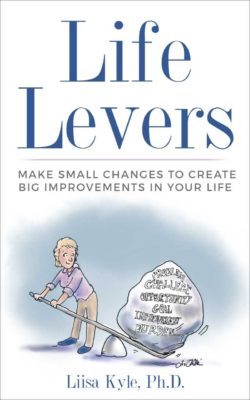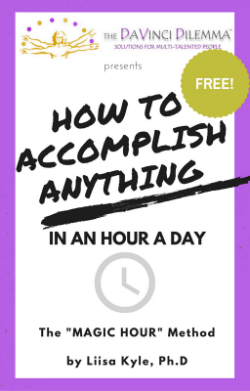Many of us live sedentary lives, tethered to our computers or work benches. Sitting hurts our health. Besides making us fat, it increases our likelihood of getting cancer — and doubles our risk of cardiovascular disease. The more we sit, the less long we live. (If you want the gory details, here’s a vivid infographic with some relevant research.)
Standing desks are an option but may be impractical or uncomfortable.
Thankfully, recent research has revealed a simple, easy, effective way to overcome the problems caused by excessive sitting. The solution is to take five-minute movement breaks throughout the day.
In this study, researchers compared what happened when office workers spent the day sitting versus those who walked on a treadmill for 30 minutes a day. It didn’t matter if they walked for thirty minutes straight or if they walked for five minutes, six times during the day. Those who spent time moving during the day had more energy, less fatigue, an improved mood, and reduced food cravings than those who just sat.
Think about it: assuming you are able-bodied and uninjured, walking for five minutes is easy to do. If you work in an office you can walk to the rest room, the break room, the mail room, the photocopier, a co-worker’s desk. If stairs are available, you can walk up and down a flight or two. If you work at home you can walk around your home inside or out. You can scamper about with your pets or put on a song and dance, if you feel so inclined. Poof! Five minutes go quickly. And the benefits are many: When you return to your desk, you’ve given your back, neck and shoulders a break from the hunched over computer position we all sink into. You’ve got your blood pumping a wee bit, which gives you energy and lifts your mood. You’ve given your brain a break. Taking a few minutes away from the task at hand allows your creativity to burble on the back burner, inviting spontaneous ideas and solutions to erupt.
A five-minute movement break is easy to do and can yield many benefits — so why not try it? If you take a mini movement break a few times a day, you’re counteracting the damage of sitting and you’re probably giving your spirits a lift as well. [Note: If you are disabled or injured, a five-minute break of any kind has benefits. To the extent you can stretch or shift your body, do so. To the extent you can alter your physical location briefly, do so. Look for creative ways to insert variety into what would otherwise be long stretches of sameness.]
Remember in high school? At the conclusion of one class, a bell would ring denoting a few minutes to walk to your next class. It probably felt good to stand up and move your body after sitting for an hour. It was a visual break. Possibly a social one in which you could greet friends in the hall or chat with a pal en route. This walking break functioned like a mini reset button: no matter what happened in the class before, there was a built in “refresh” process between classes. It may have even kept you thinner.
When I began testing these mini movement breaks, I noticed a couple of unexpected benefits. For one thing, my dogs love it. They get extra attention and activity every hour on the hour. For another, I saw a marked uptick in my productivity. That’s because I melded the mini movement breaks with my Magic Hour Method to make progress on multiple priorities in a given day. What emerged was a flexible strategy by which one can toggle among projects, alternating 55 minute focused work sessions with five-minute movement breaks in between.
Somehow, the five-minute movement breaks supercharged my work sessions. Walking around for just five minutes between work sessions gave me fresh energy and a mental “reset” such that I found myself getting more done, more efficiently, with more ease. I’m calling it Magic Hour Method 2.0
***The Magic Hour Method 2.0***
What follows is a technique to make progress on multiple projects while taking better care of your body. It is designed to be flexible so you can adapt it to suit your own unique circumstances and preferences.
Step One: Identify your priorities
What are your top priorities for the week? Let’s say you want to spend time on work project #1, work project #2, marketing, and research. (If you work at home, you may wish to add some personal projects or domestic responsibilities to the mix.) Do what makes sense for you.
Step Two: Choose an easy way to track your progress
The easier the better. A low-tech approach is to assign a color to each priority. (For example project #1 is blue, project #2 is pink, marketing is green, and research is orange). Going forward, every time you spend 55 minutes of quality time on that activity, give yourself a colored star on your calendar.
If you prefer, use your phone, tablet, or computer to track what you do.
Step Three: Apply the Magic Hour Method and Mini Movement Breaks to the mix.
When you sit down to work:
- Remove or reduce likely distractions.
- Identify your top priority at that moment.
- Set a timer for 55 minutes.
- Spend this time engaged in quality, focused progress on your chosen priority.
- When the timer goes off, put a star on your calendar to record your progress.
- Set the timer for five minutes. During this time, move your body. Walk. Stroll around. If there are stairs handy, walk up and down them once or twice.
- When the timer goes off, identify your top priority at that moment. This might be to continue what you did in step one, or it might be something else.
- Repeat steps 2 – 7. Do this as much as many times as make sense, given your particular circumstances.
Adapt this formula to suit your needs and to accommodate rest breaks, meals, interruptions, and “things that arise that require your attention”. You may wish to insert a shorter period to attend to smaller tasks (e.g. phone calls, answering your email) — or to time box things that tend to swell (like internet surfing and social media). If you have the flexibility to do so, you might insert two minute meditation or stretch breaks as needed, for example.
What’s with the colored stars?
There’s something about chronicling your progress that is intrisically rewarding. At the end of the day, you can see what you’ve accomplished. It’s also a visual way to monitor balance. By looking at the ratio of colors, you can assess, at a glance, what adjustments are needed going forward. Maybe, when you look at the stars at the end of the week, you see that “marketing” got short shrift. You can give it more attention next week.
If you expand this approach to include personal priorities, you can easily detect your work-life ratio and make adjustments, accordingly.
***
However you choose to adapt and apply this technique, it’s possible to make real, discernible progress on your top priorities, while taking better care of your health. Try it and see for yourself.
***
 Want more tips and techniques on getting things done? Check out my book YOU CAN GET IT DONE: Choose What to do, Plan, Start, Stay on Track, Overcome Obstacles, and Finish
Want more tips and techniques on getting things done? Check out my book YOU CAN GET IT DONE: Choose What to do, Plan, Start, Stay on Track, Overcome Obstacles, and Finish
Available here for only $3.99: http://bit.ly/YouCanGetItDone
***
Want to re-publish this article? Go for it – just include the author’s name, a link to this original post and the following text blurb:
Are you struggling with too many talents, skills, ideas? You may have The Da Vinci Dilemma™! Find tools, fun quizzes, coaching, inspiration and solutions for multi-talented people at http://www.davincidilemma.com/.




